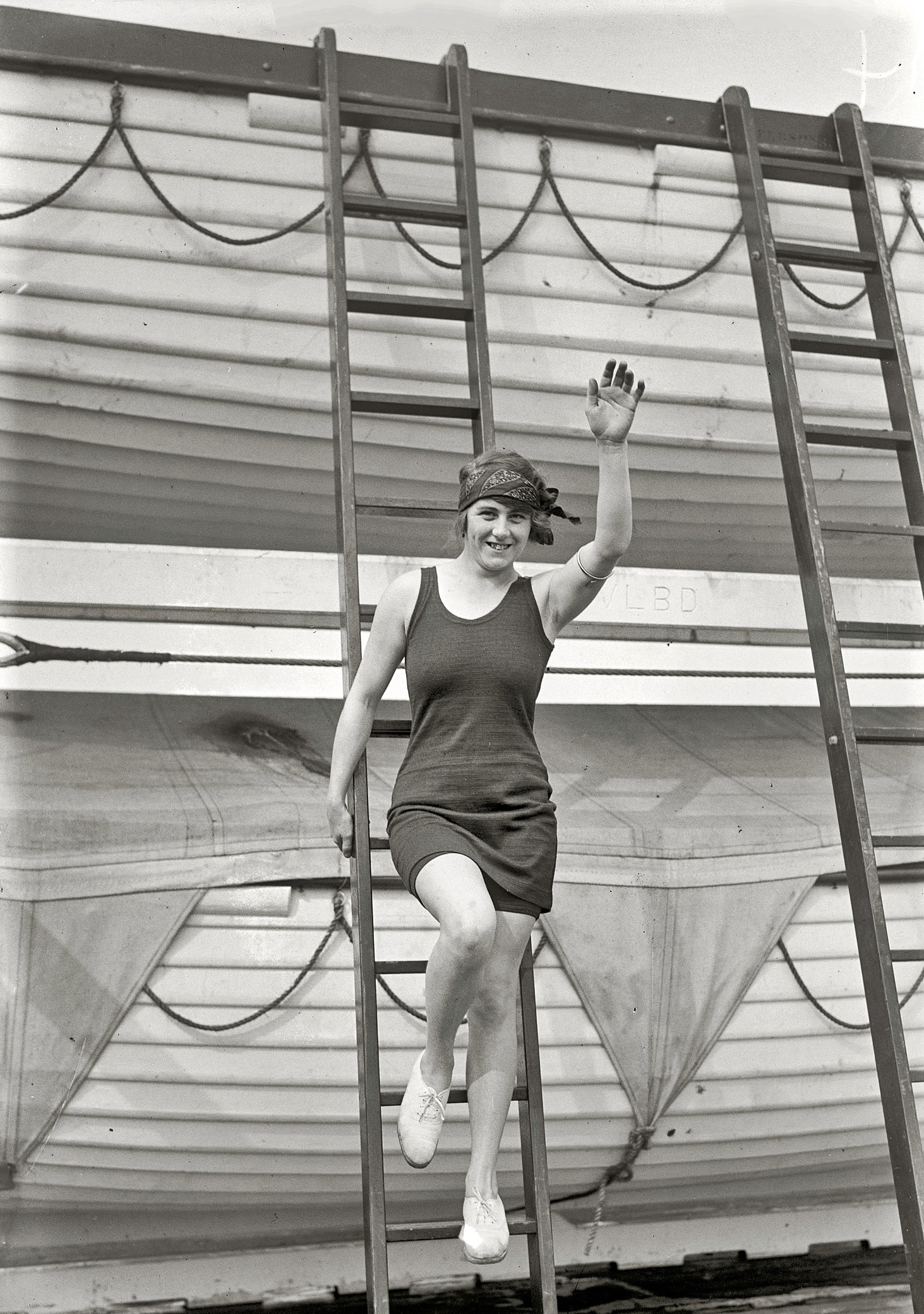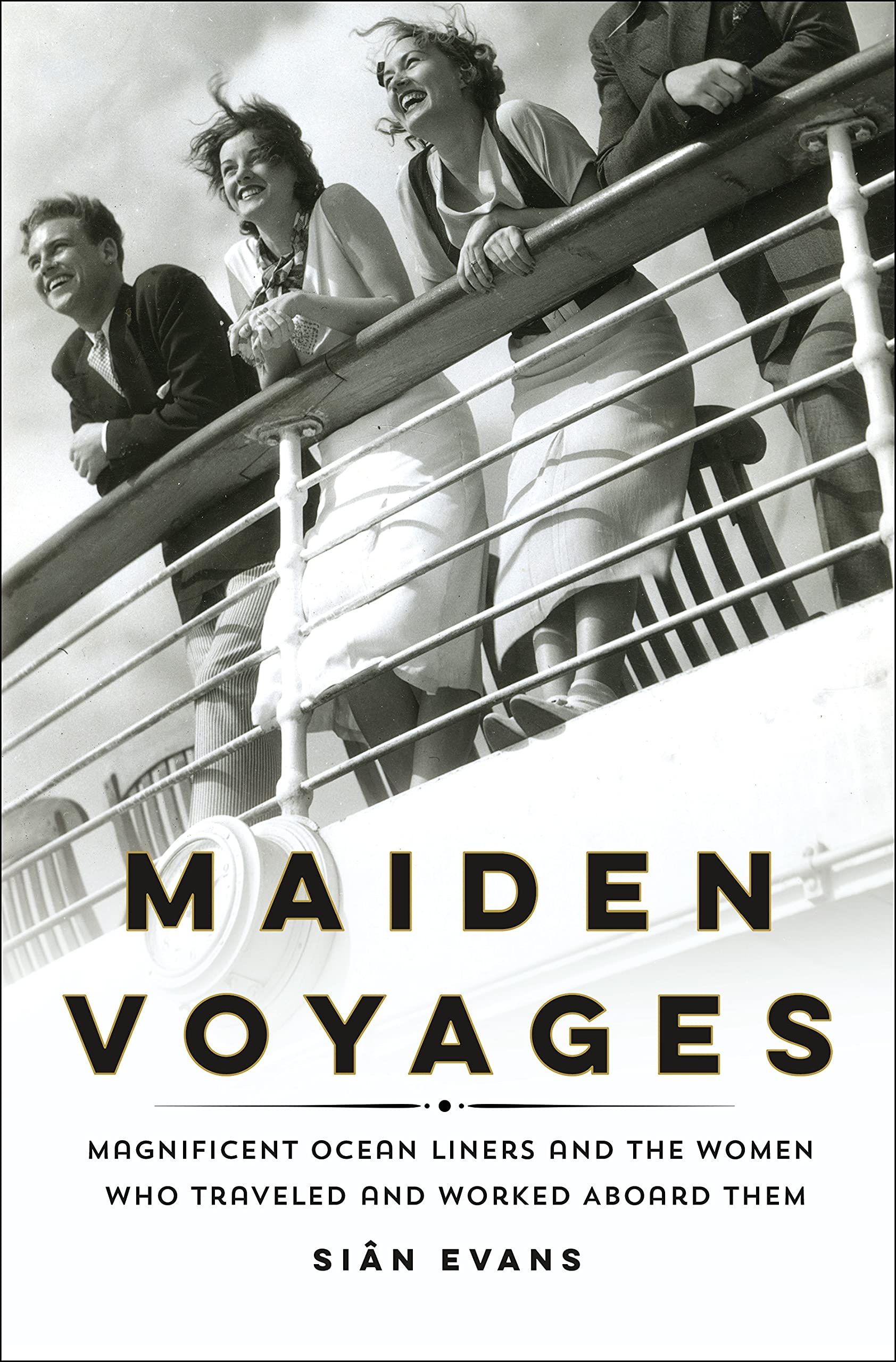In this historic nonfiction, Siân Evans highlights the role of women on the transatlantic ships, particularly in the years between the wars. Evans chooses a few specific figures to represent the various job that made travel by ship possible for women.
By the 1910s, airplanes were barely in use and certainly couldn’t make it across the ocean. Ocean liners were the best way to go, both for the well-heeled and the working class. The next two decades would mark a golden age for shipboard travel.
After WWI, more women were able to enter the workforce and this coincided with the increase of transatlantic travel. Many took positions as stewardesses, working long hours as a sort of maid, assistant, dresser, nurse and food deliverer. The best became invaluable companions, requested by guests on subsequent trips. It was hard work, but offered a solid salary and some freedom of adventure.

Other women found more niche employment aboard. Hilda James was a championship swimmer with a silver medal from the 1920 Olympics. She parlayed her experience into becoming a health and swim instructor.
Hilda was given a programme including a timetable for coaching passengers in the luxurious pool, which was designed in Roman style with marble columns, seating, a sauna and well-appointed changing rooms. There were curved staircases down from the deck above, providing a grande descente for the sporty, a witty reference to the elegant and fashionable staircase above decks in the restaurant. Hilda had a small office too, next to the pool, which offered a welcome escape from her tiny cabin passengers flocked to the pool with requests for personal tuition. ~Loc. 1343
Others proved invaluable in their particular services. Professional chaperones or conductresses guaranteed children and female passengers safe travels to the New World. “The creation of the new role of conductress provided British seafaring women with their first increase in status, to offices. Conductresses were competent, authoritative women who commanded respect…” (Loc. 1416). There were also specialized positions for hairdressers, hostesses, and nurses.
The book is an enjoyable, if disorganized, read. Characters drift in and out, eras shift, and focus changes in odd ways. Rather than group by job type, or layout chronologically, or highlight each woman individually, the narrative sort of jumps around. It was at times disorienting and distracting. As a reader, I would have also enjoyed reading the recollections of those who worked with or were served by these women, but I understand that would be another layer of research for the author.
My rating: [xyz-ihs snippet=”3-and-half-stars”]
My thanks to St. Martin’s Press for the NetGalley copy.
Publisher: St. Martin’s Press (August 10, 2021)
Language: English
Hardcover: 368 pages
ISBN-10: 1250246466

